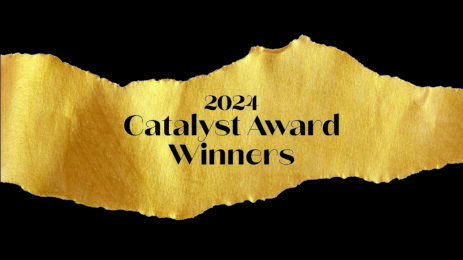Secrets to captivating the tech crowd—and bringing them back each time
As every planner knows, not all events are created equal. You wouldn’t organize an auto show in the same way you’d put on a comic convention, and a nonprofit fundraising event won’t be like an executive retreat.
Some events—technology conferences, in particular—raise higher expectations, so a little more strategic planning and a lot more perseverance are needed to pull them off. With so many variables at play, such as budget restrictions, communication snafus, different personalities and time constraints, it’s easy for plans to go awry. Knowing what makes a good tech conference a successful one has a lot to do with knowing how to meet the distinct needs of attendees.
Let’s take a closer look at what makes them tick.
Shake It Up
When it comes to drawing a tech crowd for a conference, think disruption. Tech crowds want interactive experiences that will change them. That’s why tech conferences are often “a constant party atmosphere,” according to Deborah Roszell, senior field marketing manager at MapR in Atlanta. “Technology attendees want to have fun. As for the trade show floor, have games, whiteboard or demo sessions, or interactive activities. Individuals will visit the booths that have more ‘wow’ to them.”
The same goes for speakers. “[Tech conference attendees] do not want to hear things that apply to their jobs, but rather what others are doing that may influence them,” Roszell says. Think musicians and celebrities who have made a positive impact on society, extreme sports athletes and motivational speakers. Still, there are so many conferences nowadays, you have to be able to stand out, she says.
Matthias Schultze of German Convention Bureau (GCB) concurs. “Our latest research shows that participants prefer events that are surprising, trigger change or create a sense of community,” he says. “The higher the disruption factor, the longer participants remember an event. Disruption is the key to satisfaction.”
Digitize to Impress
Not surprisingly, tech event attendees have high expectations for technology. Schultze reports that according to a recent GCB study, Meetings and Conventions 2030, “Technology is one of the most important megatrends shaping the industry. What we’re seeing is that technological innovations are helping organizers answer the current need for more customized meetings.
“More individual communication and cooperation, even over long distances, is becoming more common.” For example, planners can now create virtual rooms with augmented reality, and digital interpreters are helping to enhance networking services.
The GCB’s Future Meetings study has found that it is important to provide a digital background for events. Schultze recommends the use of networking apps, and advises planners to take advantage of user-friendly technology, such as self-projecting surfaces, cloud systems and interactive tables, to add pizazz to conferences and hold attendees’ interest.
“All these elements help to encourage discussion between the participants,” he says. “We’re seeing that highly digital events lead to more business.”
Location, Location, Location
Despite the growing number of hybrid events—those that combine live interactions at a physical location with a virtual online component for remote attendees—Schultze says he has seen a rise in in-person events and expects them to increase because “people are unwilling to forego the experience of personal interaction.”
For tech conference attendees, including those from Generation Y, “Interaction and exchange are the focus, complimented by practical application and the memory of a valuable experience,” he says.
Flexibility is also key, so err on the side of having too much space, or choose meeting spaces with options to expand or convert. As an example, he says planners might want flexibility to offer a main space that’s set up for lecture-style presentations while also offering interactive forums in the venue. Flexible spaces create more room for newer event formats, such as co-working conferences, innovation boot camps and “matchmaking” programs, for instance.
As for the future, Schultze foresees multispace meeting spaces, “including a main-room foyer and storage area to enable flexible response to the evolving needs of meeting planners and participants.”




